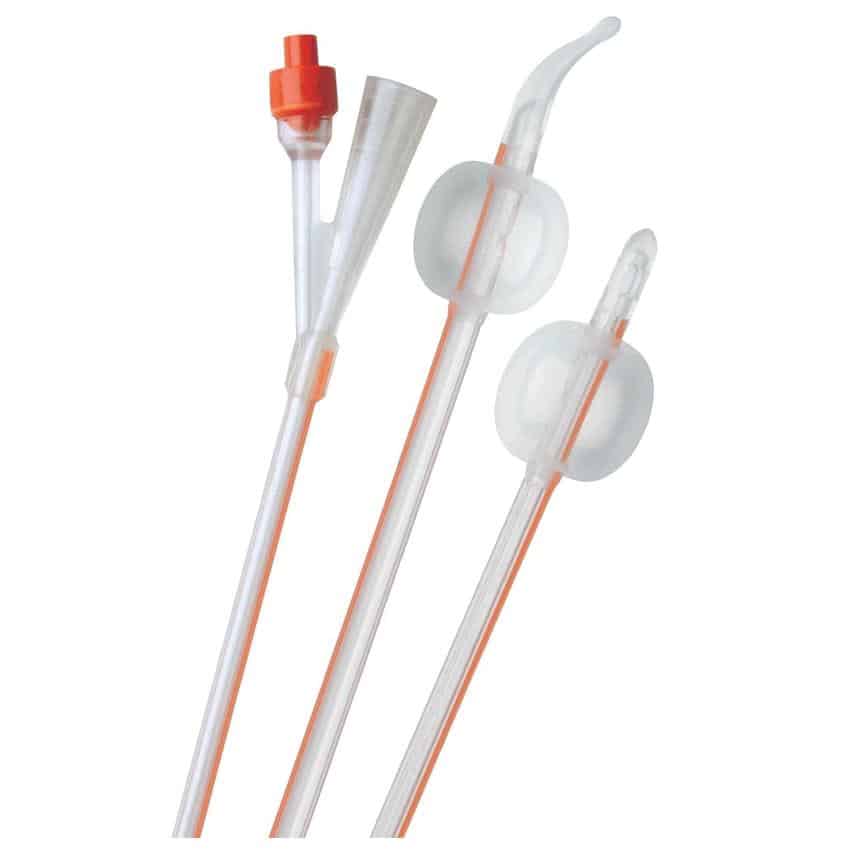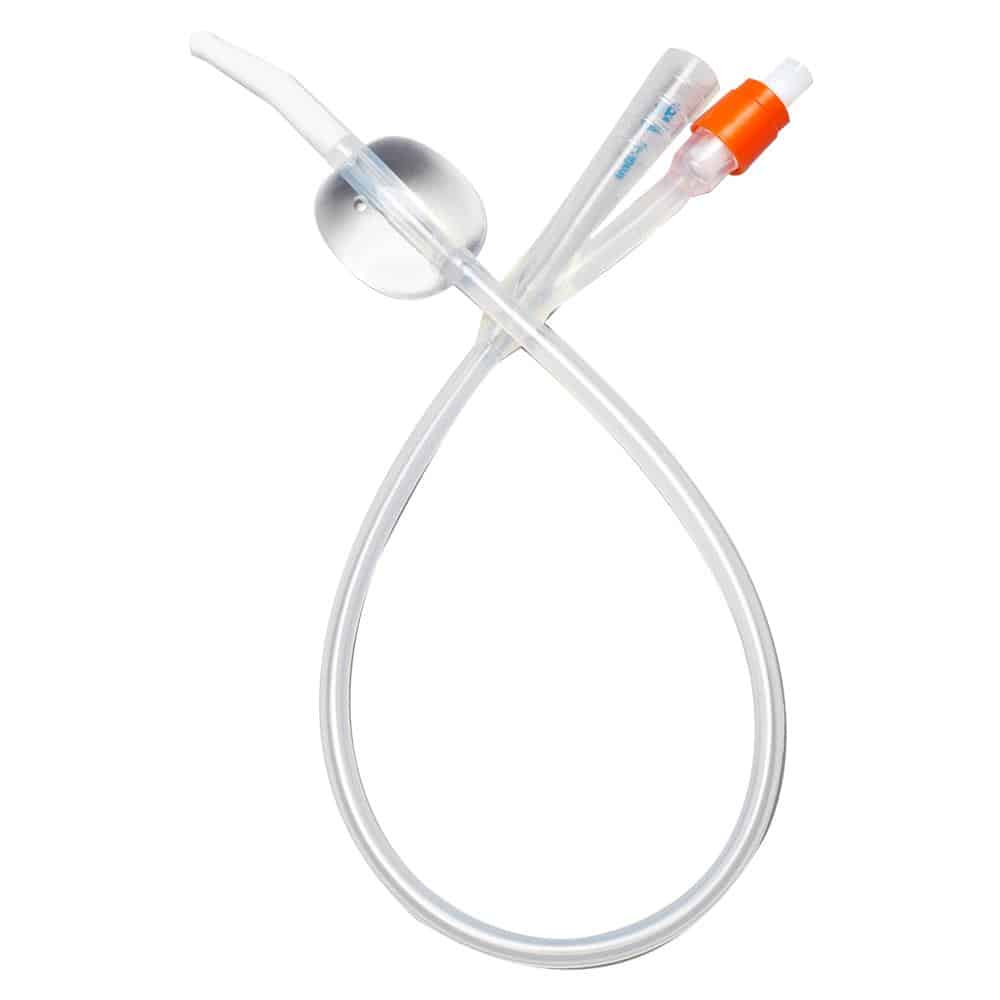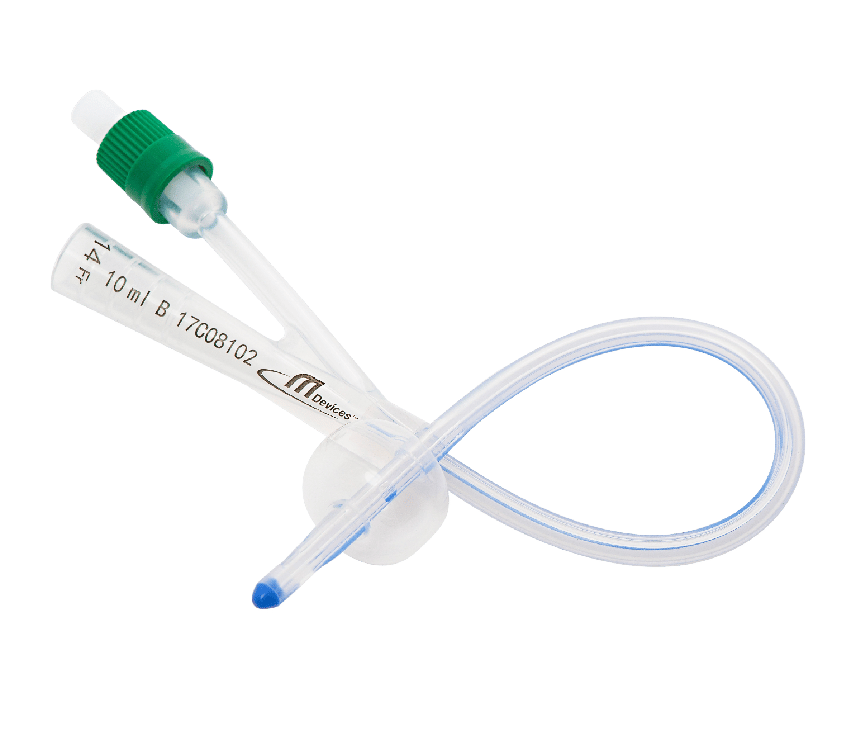When To Use A Urinary Catheter
As we mentioned, the primary cause for getting a urinary catheter is in short periods of time where you may not be able to empty your bladder on your own. If youre having difficulty controlling your urination, urinary incontinence, or urinary retention, your doctor will likely recommend a catheter.1
Urinary incontinence is when accidental urine loss occurs and can happen in both men and women.2Urinary retention occurs when you cant empty your bladder without added help.
There are a number of reasons you might be experiencing these problems, but the catheter will allow your doctor to find the underlying cause and address the problem. Bladder or kidney stones, blood clots, or recent surgery in the hip area are primary culprits. Certain medications can also impair the effectiveness of your bladder muscles, making it difficult to completely empty your bladder on your own. Talk to your doctor about any and all medications you are taking if you experience problems with incontinence, retention, or overall urine control.
In more severe instances, such as nerve injuries to the brain, spinal cord, or bladder, multiple sclerosis, spina bifida, dementia or an enlarged prostate, long-term catheter use is often recommended.
Preventing Infections And Other Complications
Having a long-term urinary catheter increases your risk of developing urinary tract infections , and can also lead to other problems, such as blockages.
You will be advised about measures to take to minimise these risks, such as:
- regularly washing your hands, body and catheter with warm water and soap its particularly important to clean your hands before and after touching your equipment
- ensuring you stay well hydrated you should aim to drink enough fluids so that your urine stays pale
- preventing constipation staying hydrated can help with this, as can eating high-fibre foods such as fruits, vegetables and wholegrain foods
- avoiding kinks in the catheter and making sure any urine collection bags are kept below the level of your bladder at all times
Read more about the risks of urinary catheterisation.
Selection Of Appropriate Catheter Material
Short term
- Short rigid plastic/PVC
Medium term
- Teflon – coated latex
Long term
- Hydrogel – coated latex
Teflon-coated catheters are still available for medium-term use for up to 28 days.
Hydrogel coated catheters have been produced to help minimise catheter complications. The soft slippery surface helps reduce trauma on insertion and removal.
Hydrogel-coated catheters may be associated with fewer episodes of urinary bypassing and to be retained in situ longer than Silicone Elastomer coated catheters. Hydrogel-coated catheters are also available pre-filled which ensures that the correct quantity of sterile water is used for inflating the balloon.
For patients with a latex allergy an all silicone or a Hydrogel-coated silicone catheter should be used. This is indicated for suprapubic and urethral use.
All silicone catheters could be an option for continual blockage due to a larger lumen. However the catheter is less pliable.
Silicone also allows the slow diffusion of water from the balloon. This should be remembered when deflating the balloon and may account for 10% of silicone catheters falling out. The balloon may also “cuff” when deflated which can be a problem when inserted supra-pubically. Assuming the catheter is licensed for supra pubic use this should not deter from its use especially when a patient may be allergic to latex.
Also Check: Can You Get A Urinary Tract Infection From Sex
Understand The Main Urinary Catheter Types
There are a few catheter types but they all help drain urine from your bladder. A number of conditions can lead to the need for urinary catheters including recent surgery trouble emptying your bladder or even a spinal cord injury. Your doctor may also use a catheter to measure your urine output.
Its helpful to understand why a doctor chose a specific catheter. Medline Plus notes that three common catheter types are indwelling condom and intermittent self-catheter.
1. Indwelling catheter
An indwelling catheter can be used to monitor the amount of urine your body creates to manage a condition or to help a patient after surgery. Unlike other types indwelling catheters are meant to stay in place for a period. According to the Bladder and Bowel Foundation this period of time could be short such as after a surgery or long term for people with significant urinary trouble.
Indwelling catheters use a thin tube inserted into the bladder to collect urine. Theyre held in place with a small fluid-filled balloon which keeps it from falling out of your bladder.
There are a couple of different approaches to indwelling catheterization: suprapubic and Foley. Suprapubic catheters are inserted into your bladder through a small hole in your belly while Foley catheters reach your bladder through your urethra notes healthtalk.org.
2. Condom catheter
3. Intermittent self-catheterization
Gaps In The Evidence: Management Of Patients With Long

Providing evidence-based care on catheter use is important to improving patients outcomes and preventing urinary catheter-related complications., Despite long-term indwelling catheter use being a common treatment plan to manage urinary retention and urinary incontinence, there is a lack of clarity on how to manage patients with long-term indwelling urinary catheters, including policies for replacing long-term urinary catheters. Thus, this report aims to summarize the evidence-based guidelines regarding the management of patients with long-term indwelling urinary catheters.
Don’t Miss: Urinary Tract Infection Frequent Urination
How Far Do You Insert Female Catheter
Insert the catheter:
Choosing The Right Catheter And Equipment
Your health professional will help you choose the right catheter and equipment for you. This will depend upon the reason you need the catheter, how long it is expected to remain in place, and what will best suit you and your lifestyle.
- external circumference of the catheter
- inside space of the catheter the right size for you is the smallest size possible to drain your bladder adequately
- material for example, silicone, latex or Teflon, or a combination of these. The material selected will depend on how long the catheter will be in place
- length, shape, design and structural features decisions about the length of the tube, the size of the collection bag and the means of attachment will depend on factors such as whether you are able to walk, how and where you intend to store or wear your collection bag, and how frequently you will be able to empty it
- how to secure or anchor your catheter to make you comfortable and reduce possible trauma. Catheter supports prevent unnecessary tugging of the catheter tubing on the bladder and irritation of the urethra and its opening
- lifestyle needs your catheter should be customised to your lifestyle choices for example, it may need to be easily portable, discreet, and have all the necessary features for you to be able to use it confidently, such as a handling aid.
Don’t Miss: Does Cranberry Juice Really Help Urinary Tract Infections
Types Of Indwelling Urinary Catheters For Long
Prolonged urinary catheterization is common amongst people in long-term care settings, for example in nursing homes or home care. In addition, many people living in the community need to have a permanent catheter. Long-term catheterization was defined as for more than 30 days. We identified only three trials involving 102 adults in various settings. All three trials were too small to provide reliable evidence to indicate which types of catheters are best to use in which patients.
The updated search could not reveal any additional evidence. Very few trials have compared different types of catheter for long-term bladder drainage. All trials were small and showed methodological weaknesses. Therefore, the evidence was not sufficient as a reliable basis for practical conclusions. Further, better quality trials are needed to address the current lack of evidence in this clinically important area.
Prolonged urinary catheterization is common amongst people in long-term care settings and this carries a high risk of developing a catheter-related urinary tract infection and associated complications. A variety of different kinds of urethral catheters are available. Some have been developed specifically to lower the risk of catheter-associated infection, for example antiseptic or antibiotic impregnated catheters. Ease of use, comfort and handling for the caregivers and patients, and cost-effectiveness are also important factors influencing choice.
Which Catheter To Use
Intermittent catheterization is the preferable method to empty the bladder when you cant urinate naturally. It is safe in the short-, mid- and long-term, minimizing common risks such as urinary tract infections , strictures, bladder stone complications and upper urinary tract deterioration.
Intermittent catheterization is closest to natural urination, and gives the user control and freedom. For short-term users, intermittent catheterization gives a faster recovery and return to normal voiding after surgery.Of the different types of intermittent catheters, evidence shows that hydrophilic single use catheters are best at reducing the risk of complications.
Follow us on:
Don’t Miss: Best Products For Urinary Incontinence
Urinary Catheter Side Effects
There are a few things to watch for when you use urinary catheters other than external and condom catheters.
Infection. This is the most common problem. The catheter may let germs into your body, where they can cause an infection of your bladder, urethra, urinary tract, or kidneys. Call your doctor if you:
Leaks. This may be a sign that your catheter is blocked by clotted blood or debris. Tell your doctor if you see blood clots in your urine or you think something is blocking the flow of urine.
Bladder spasms. These can happen if your bladder tries to push out the catheter. Medicine can help.
Other, less common side effects are:
Why Urinary Catheters Are Used
A urinary catheter is usually used in people who have difficulty passing urine naturally. It can also be used to empty the bladder before or after surgery and to help perform certain tests. Specific reasons include:
- to allow urine to drain if you have an obstruction in the tube that carries urine out of the bladder for example, because of scarring or prostate enlargement
- to allow you to urinate if you have bladder weakness or nerve damage which affects your ability to pee
- to drain your bladder during childbirth, if you have an epidural anaesthetic
- to drain your bladder before, during and/or after some types of surgery, such as operations on the womb, ovaries or bowels
- to deliver medication directly into the bladder, such as during chemotherapy for bladder cancer
- as a treatment for urinary incontinence when other types of treatment havent worked
The catheter will be used until its no longer needed. This may be for a short time and will be removed before leaving hospital, or it may be needed for longer or even permanently.
Don’t Miss: Can Cranberry Juice Cure A Urinary Tract Infection
How Do You Insert An Indwelling Foley Catheter
Insert catheter into the urethral opening, upward at approximately 30 degree angle until urine begins to flow. Inflate the balloon slowly using sterile water to the volume recommended on the catheter. Check that child feels no pain. If there is pain, it could indicate the catheter is not in the bladder.
How Do You Use An Indwelling Catheter

Insert catheter into the urethral opening, upward at approximately 30 degree angle until urine begins to flow. Inflate the balloon slowly using sterile water to the volume recommended on the catheter. Check that child feels no pain. If there is pain, it could indicate the catheter is not in the bladder.
You May Like: Is Itching A Sign Of Urinary Tract Infection
Slide : Indwelling Urinary Catheter Entry Pathways For Microbes1
Bladder
- Bacteria movement up the catheter.
Urethra
- Breaks in the catheter tubing or collection bag.
- Contamination of the catheter tubing or collection bag.
Image source: Maki DG, Tambyah PA. Engineering out the risk of infection with urinary catheters. Emerg Infect Dis. 2001 Mar-Apr 7:342-7.CMS, State Operations Manual, 2014.
1. Maki DG, Tambyah PA. Engineering out the Risk for Infection with Urinary Catheters. Emerg Infect Dis. 2001 7:342-7.
S Of An Indwelling Catheter
indwelling catheter
- In double-lumen indwelling catheters, one is for urine drainage and the other one is used to inflate the balloon .
- In triple-lumen indwelling catheters, the additional lumen is used to regularly deliver irrigation fluid into the bladder. This can help prevent blood clots from forming, which is especially important in certain cases, like after a prostate surgery .
Figure 2: The differences between A. double-lumen and B. triple-lumen indwelling catheters.
You May Like: How Dangerous Is A Urinary Tract Infection
How To Clean Your Catheter
Itâs best to clean your catheter twice a day, once in the morning and once in the evening. Youâll need:
- Clean washcloth
Then, you can follow these nine steps:
Catheters : The Basics Of Urinary Catheter Types
There are three main types of Catheters: intermittent catheters, indwelling catheters, and external catheters. Both intermittent catheters and indwelling catheters are considered internal urinary catheters, and as the name suggests, external catheters are considered external urinary catheters. Read on to learn more about these 3 types and the different types of each.
You May Like: How To Manage Urinary Incontinence
Selection Criteria And Methods
One reviewer screened citations and selected studies. In the first level of screening, titles and abstracts were reviewed and potentially relevant articles were retrieved and assessed for inclusion. The final selection of full-text articles was based on the inclusion criteria presented in .
Selection Criteria.
Indwelling Urinary Catheters: Types
Indwelling urinary catheters are semi-rigid, flexible tubes. They drain the bladder but block the urethra. IUCshave double lumens, or separate channels, running down it lengthwise. One of the lumen is open at both ends and allows for urine drainage by connection to a drainage bag.The other lumen has a valve on the outside end and connects to a balloon at the tip the balloon is inflated with sterile water when it lies inside the bladder, and allows for retention in the bladder. These are known as two-way catheters. The name of the Foley catheter comes from the designer, Frederic Foley, a surgeon working in Boston, Massachusetts, in the 1930s. His original design was adopted by C. R. Bard, Inc. who manufactured the first prototypes and named them in honor of the surgeon.
Recommended Reading: What Tea Is Good For Urinary Tract Infection
Conditions That May Require Urinary Catheterisation
Urinary catheterisation can be useful for people with bladder problems, such as:
- urinary retention inability to empty the bladder, for example due to neurological conditions such as stroke and multiple sclerosis, or other factors such as faecal impaction or enlarged prostate
- bladder obstruction for example, caused by bladder stones or narrowing of the urethra .
It can also be useful on a temporary basis, such as:
- to help people to retrain their bladder catheterisation can be discontinued as soon as bladder control is re-established
- after surgery to the genital area such as prostate gland or hip surgery or a hysterectomy
- for the first few days after major surgery or to monitor fluid output in patients receiving intravenous fluids.
What Size Foley Catheter Is Commonly Used For Adults

Size 12 Fr is large enough to relieve urinary obstruction in most adults, although practitioners typically choose size 14 to 16 Fr for initial catheterization. Larger diameter catheters may be required for adequate drainage of hematuria or clots. The catheter is typically attached to a drainage bag.
Don’t Miss: Demanos For Urinary Tract Infection
Summary Of Critical Appraisal
The four evidence-based guidelines were assessed using the AGREE II tool. All included guidelines are considered high quality.
All guidelines fulfilled the criteria for Domain 1 and Domain 2 of the AGREE II checklist: the overall objectives, health questions, and populations to whom the guidelines apply are specifically described GDGs included individuals from all relevant professional groups the guideline developers sought the views and preferences of the target population the target users of the guidelines are clearly defined. These features may increase the reliability of the recommendations as they demonstrate sound methodology and make these publications less prone to biases.
All guidelines fulfilled the criteria for Domain 4 of the AGREE II checklist: the recommendations are specific and unambiguous the different options for management of the condition or health issue are clearly presented and key recommendations are easily identifiable.
Additional details regarding the strengths and limitations of included publications are provided in .
Slide : Prepping For Catheter Insertion Procedure3
- Cleanse hands and don gloves
- Get your buddy to help at the bedside
- Place resident in the supine position
- For a femaleapply topical lidocaine jelly if needed for comfort
- Inspect catheter kit and remove it from its outer packaging to form a sterile field
- Remove gloves and wash hands!
3. Willson M, Wilde M, Webb M, et al. Nursing interventions to reduce the risk of catheterassociated urinary tract infection: part 2: staff education, monitoring, and care techniques. J Wound Ostomy Continence Nurs. 2009 36:137-54. PMID: 19287262.
Don’t Miss: Urinary Tract Infection Over The Counter Treatment Walgreens
How Often Should Indwelling Catheter Be Cleaned
It needs to be emptied every 3 to 4 hours because it’s smaller. How do I care for the catheter and drainage system? Always wash your hands with soap and water or an alcohol-based cleaner before and after doing catheter care. Use soap and water if your hands look dirty, not the alcohol-based cleaner.